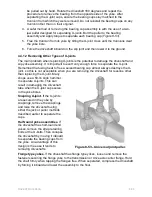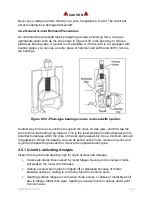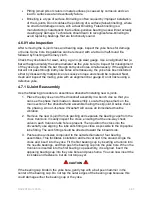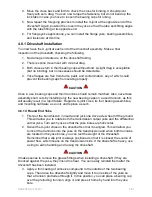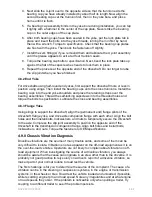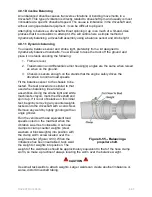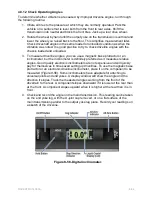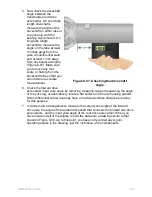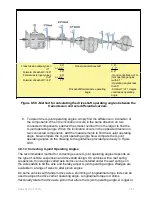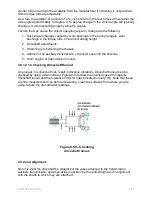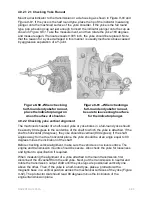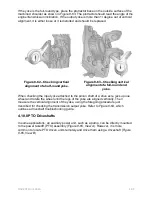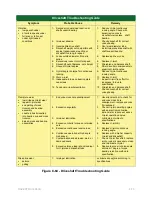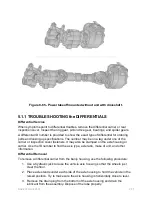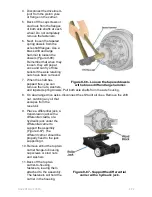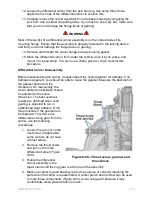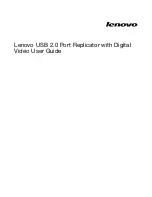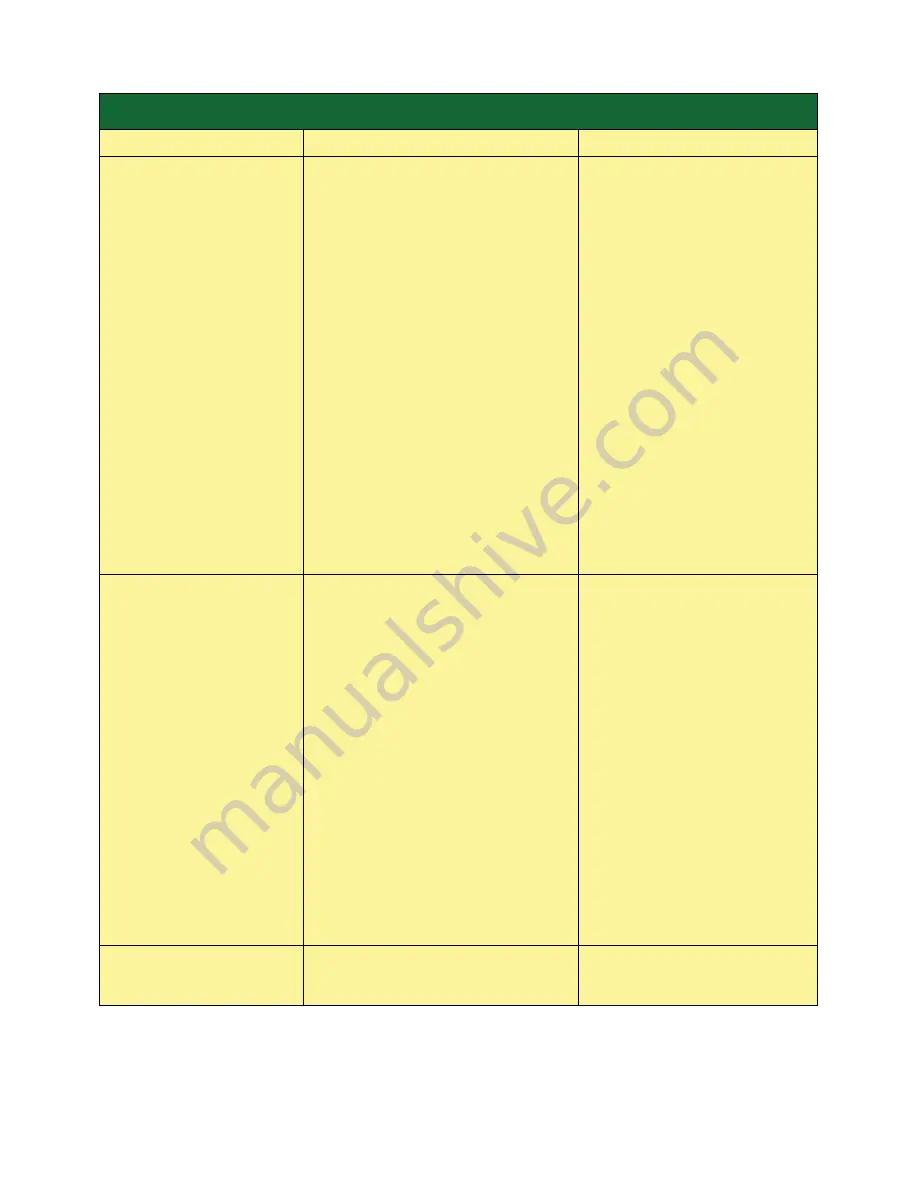
Driveshaft Troubleshooting Guide
Symptom
Probable Cause
Remedy
Vibration
•
low gear shudder
•
at certain speeds under
full drive or full coast
•
under light loaded
conditions
1. Secondary couple load reaction at
shaft support bearing
2. Improper phasing
3. Incompatible drive shaft
4. Driveshaft weight not compatible with
engine transmission mounting or
driveshaft too long for speed
5. Loose outside diameter fit on slip
spline
6. Excessively loose U-joint for speed
7. Driveshaft out of balance; not straight
8. Unequal U-joint angles
9. U-joint angle too large for continuous
running
10. Worn u-joint
11. Inadequate torque on bearing plate
capscrews
12. Tensional or inertial excitation
1. Reduce U-joint continuous
running angle. Check with
transmission or axle
manufacturer-replace shaft
bearing.
2. Check driveshaft for correct
yoke phasing.
3. Use larger diameter tube.
4. Install two piece driveshaft with
shaft support bearing.
5. Replace spline or yoke.
6. Replace U-joint.
7. Straighten and balance shaft.
8. Shim drive train components to
equalize U-joint angles.
9. Reduce U-joint continuous
running angle.
10. Replace U-joint
11. Inspect U-joint flex effort for
looseness; torque to
specification.
12. Straighten and balance shaft.
Check driveshaft for correct
yoke phasing.
Premature wear
•
low mileage U-joint wear
•
repeat U-joint wear
•
end galling of cross
trunnion and bearing
assembly
•
needle rollers brinnelled
into bearing cup and cross
trunnion
•
broken cross and bearing
assemblies
1. End yoke cross hole misalignment
2. Excessive angularity
3. Improper lubrication
4. Excessive U-bolts torque on retaining
nuts
5. Excessive continuous running load
6. Continuous operation at high angle
high speed
7. Contamination and abrasion; worn or
damaged seals
8. Excessive torque load (shock loading)
for U-joint and driveshaft size
1. Use alignment bar to check for
end yoke cross hole
misalignment; replace end yoke
if misaligned.
2. Check U-joint operating angles
with an electronic driveline
inclinometer, reduce excessive
U-joint operating angles.
3. Lubricate according to
specifications.
4. Replace U-joint kit.
5. Replace U-joint continuous
running angle.
6. Replace with a higher capacity
U-joint and driveshaft.
7. Check U-joint flex effort; replace
joint or yoke is necessary; clean
and relubricate U-joint.
8. Realign to proper running angle
minimum 1 degree; torque
bearing retention method to
specification.
Slip spline wear
•
seizure
•
galling
1. Improper lubrication
Lubricate slip sp[line according to
specifications.
Figure 8-64 - Driveshaft Troubleshooting Guide
NAVEDTRA 14050A
8-70



